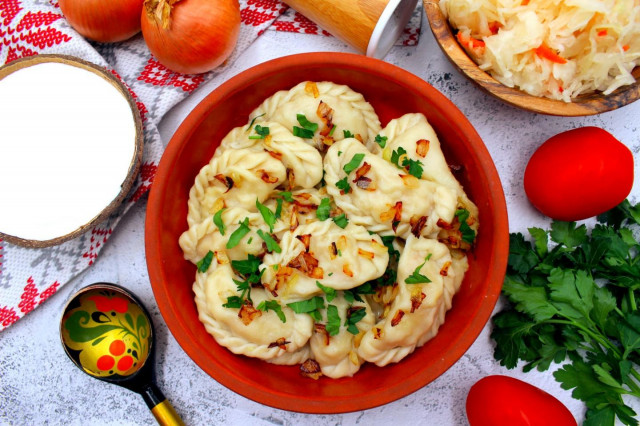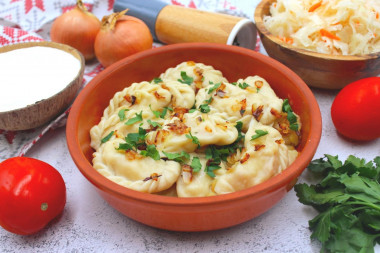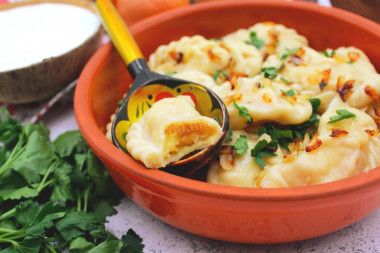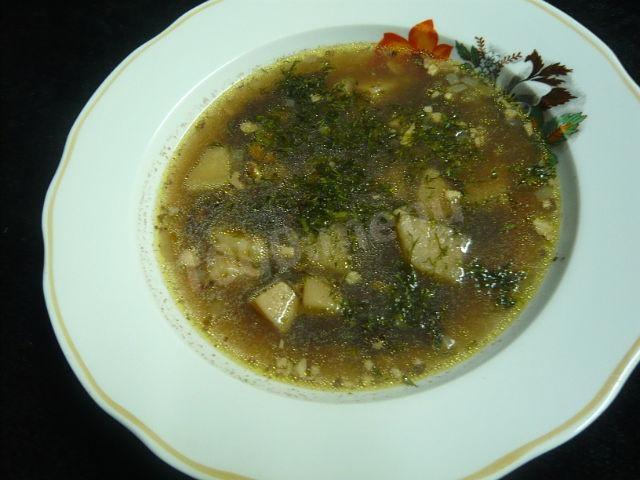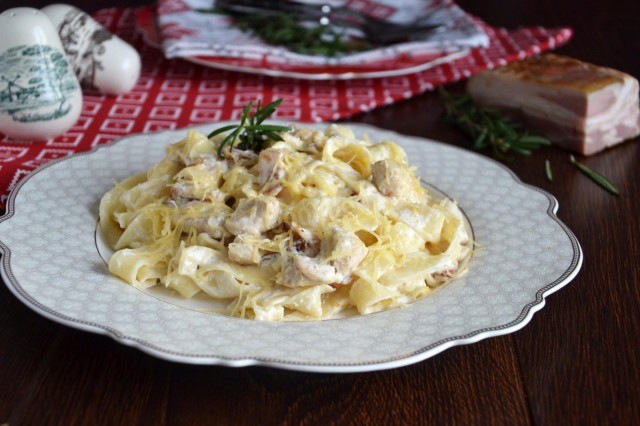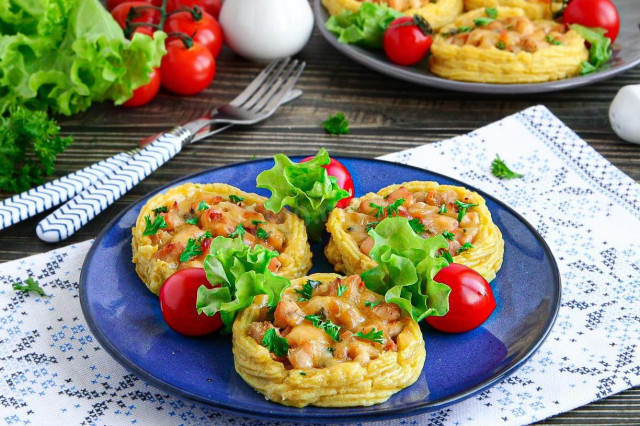Composition / ingredients
Step-by-step cooking
Step 1:
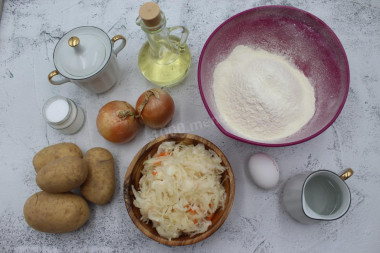
How to make dumplings with potatoes and cabbage? Prepare all ingredients. Use premium grade flour, category C1 egg, medium-sized potatoes, odorless vegetable oil and finely ground salt (extra).
Step 2:
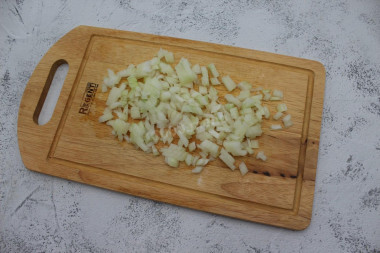
Prepare the filling first. Peel the onion and cut into cubes. Onions can also be chopped with a blender, but it is not necessary to chop the onion coarsely. Dumplings are not large in size and the filling in them should be homogeneous.
Step 3:
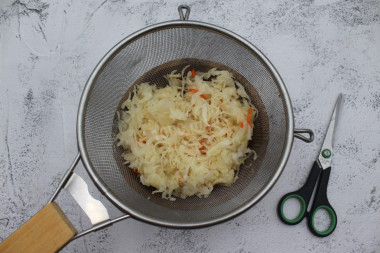
Tip the sauerkraut into a colander, squeeze slightly and let the excess liquid drain. So that the cabbage does not stretch from the ready-made dumplings, we cut it into smaller parts with scissors. If the cabbage is too sour, it can be rinsed under water.
Step 4:
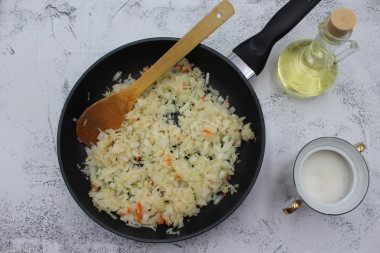
Pour vegetable oil into a frying pan and fry chopped onion with chopped sauerkraut on it for 10-15 minutes, adding granulated sugar.
Step 5:
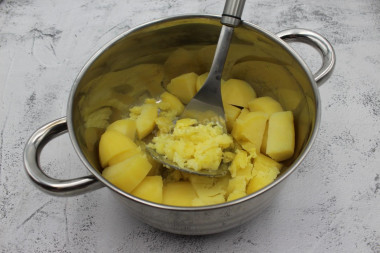
Peel the potatoes and boil in slightly salted water until tender. To boil the potatoes faster, cut them into several parts. You can digest the potatoes a little, then it will be easier to crush them. When the potatoes are ready, drain the water from it and use a potato masher to mash the potatoes until smooth. Potato lumps should not remain in the mashed potatoes.
Step 6:
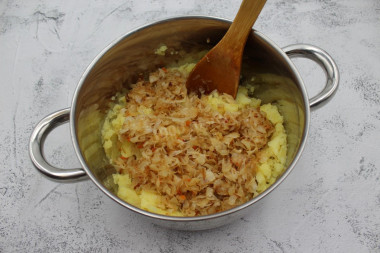
Combine the resulting mashed potatoes with fried onions and cabbage, adding vegetable oil on which the vegetables were fried. So the filling will not be dry. Season to taste with salt and mix. Now the filling should cool down a little. At this time, prepare the dough for dumplings.
Step 7:
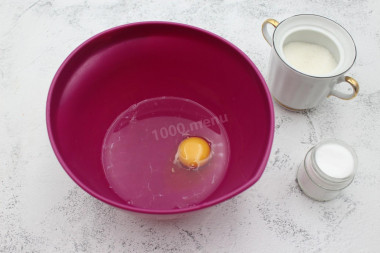
Pour water into a container for kneading dough, beat in a chicken egg, add sugar and salt. Mix all the ingredients thoroughly.
Step 8:
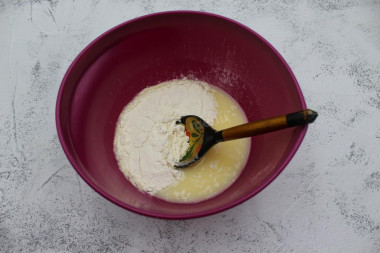
Sifting flour through a sieve, introduce it in parts into the egg-water mixture. The flour must be sifted so that it is saturated with oxygen, which will allow the dough to become more tender and soft.
Step 9:
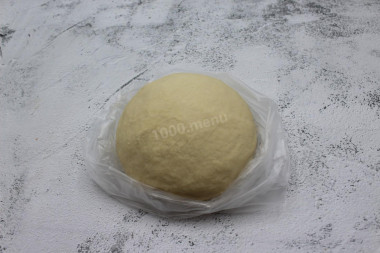
Start kneading the dough. When it is possible to form a ball from the dough, transfer it to a floured work surface and knead with your hands for 8-10 minutes. The dough should become elastic and soft and not stick to your hands. Put the kneaded dough in a plastic bag and let it rest for 20 minutes. This procedure with the package will allow the dough to become even softer and more elastic.
Step 10:
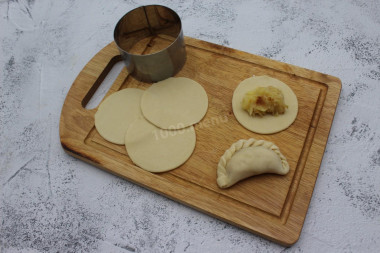
After 20 minutes, take 1/3 of the dough, put it on a lightly floured work surface, roll it into a layer and use a mold (glass, pastry ring) to cut out circles. Put the cooled potato-cabbage filling in the center of the circles and make dumplings, connecting the edges and giving the dumplings a beautiful shape. I made a traditional pigtail, but you can use another type of modeling. Do the same with the remaining dough and filling.
Step 11:
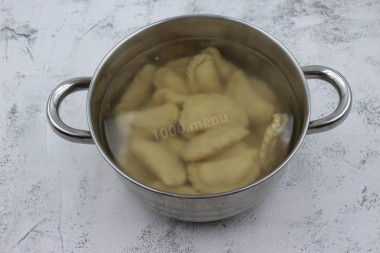
The required amount of dumplings can be boiled immediately. Pour water into a saucepan, bring it to a boil, add salt and place dumplings with potatoes and sauerkraut in boiling water. After the dumplings pop up, cook them for another 3 minutes.
Step 12:
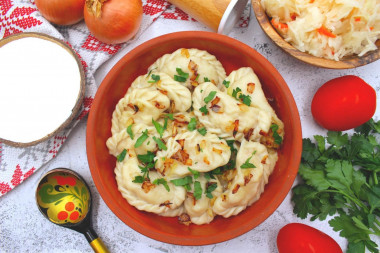
Put ready-made dumplings on a plate with a slotted spoon and, if desired, sprinkle with fried onions, serve with sour cream on the table. Freeze the remaining dumplings.
Be sure to wash the eggs before use, as even the seemingly clean shell may contain harmful bacteria. It is best to use food detergents and a brush.
Be prepared for the fact that flour may need more or less than indicated in the recipe. Focus not on the amount of flour, but on the desired consistency of the dough. To avoid mistakes, read about flour and its properties!
To avoid irritating the mucous membrane of the eyes when slicing onions, rinse the onion and knife with cold water. The cutting board will not absorb the unpleasant onion smell if you rub it with a piece of lemon before slicing.
Caloric content of the products possible in the composition of the dish
- Onion - 41 kcal/100g
- Ripe potatoes - 80 kcal/100g
- Baked potatoes - 70 kcal/100g
- Mashed potatoes - 380 kcal/100g
- Boiled potatoes - 82 kcal/100g
- Potatoes in uniform - 74 kcal/100g
- Fried potatoes - 192 kcal/100g
- Sour cream with 30% fat content - 340 kcal/100g
- Sour cream of 25% fat content - 284 kcal/100g
- Sour cream with 20 % fat content - 210 kcal/100g
- Sour cream of 10% fat content - 115 kcal/100g
- Sour cream - 210 kcal/100g
- Chicken egg - 157 kcal/100g
- Egg white - 45 kcal/100g
- Egg powder - 542 kcal/100g
- Egg yolk - 352 kcal/100g
- Ostrich egg - 118 kcal/100g
- Whole durum wheat flour fortified - 333 kcal/100g
- Whole durum wheat flour universal - 364 kcal/100g
- Flour krupchatka - 348 kcal/100g
- Flour - 325 kcal/100g
- Granulated sugar - 398 kcal/100g
- Sugar - 398 kcal/100g
- Vegetable oil - 873 kcal/100g
- Sauerkraut - 19 kcal/100g
- Salt - 0 kcal/100g
- Water - 0 kcal/100g

